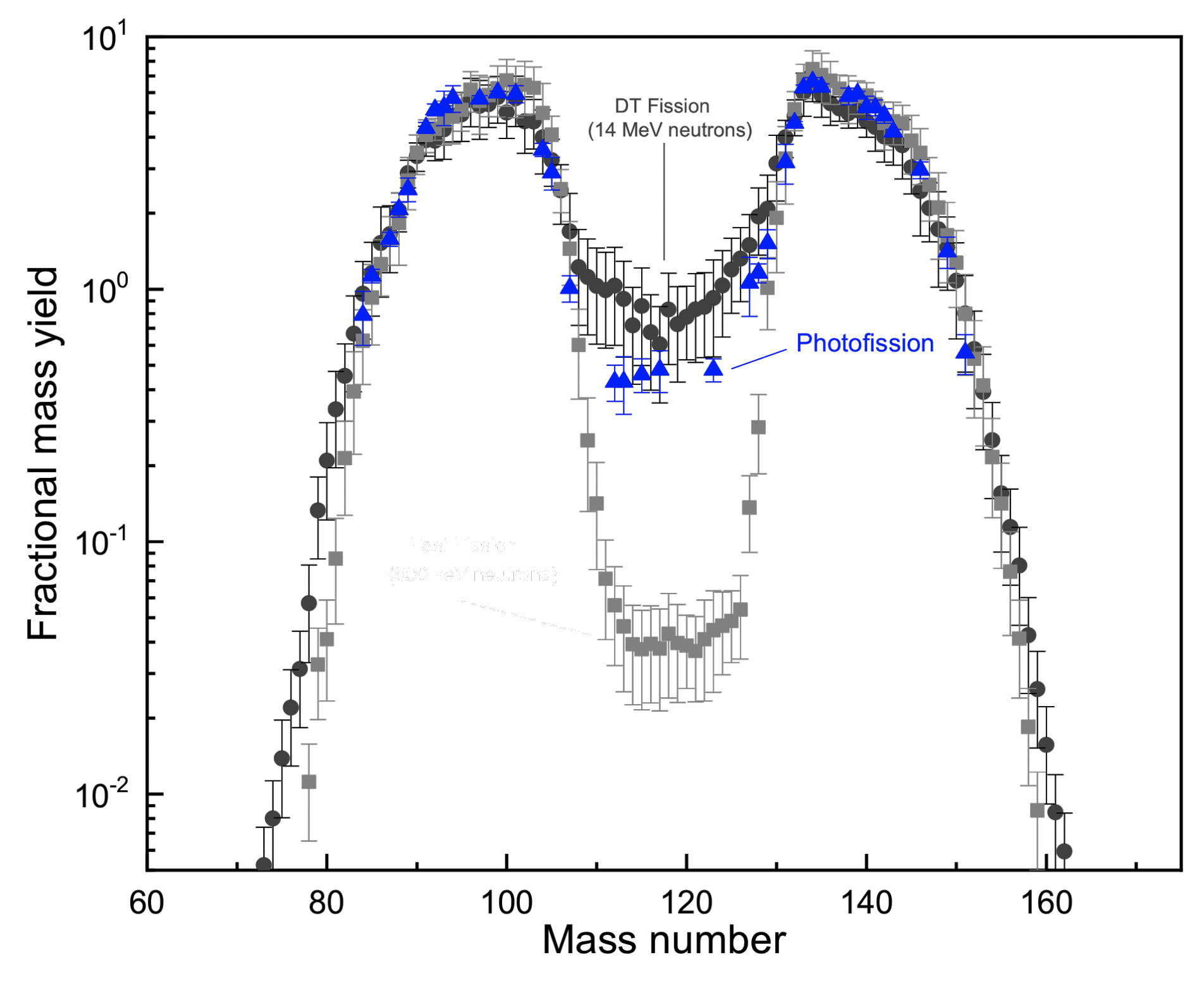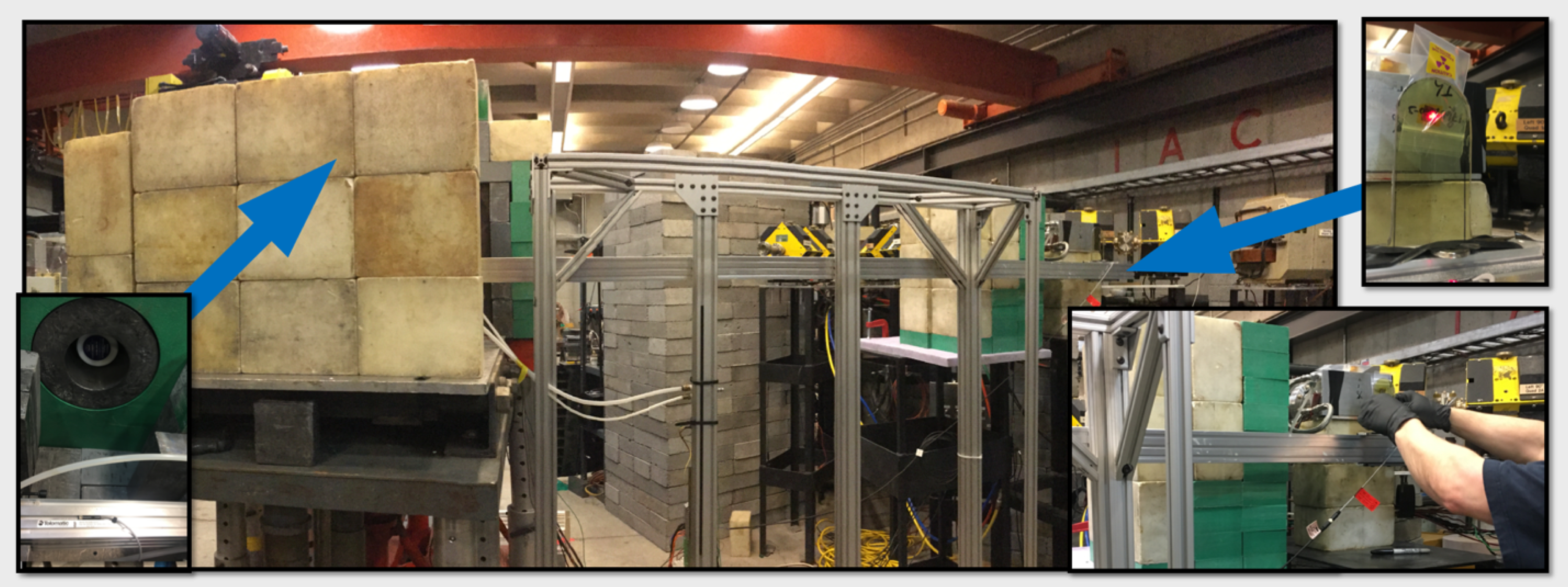Despite the decades of previous research, many aspects of the available, empirical fission data are lacking. The evaluated data widely used in computational tools suffer from inaccuracies and large relative uncertainties, particularly with respect to short-lived and low-yield fission products. The existing data is often based on nuclear models and limited experimental measurements of these fission product yields have been performed. This work seeks to validate and improve, where applicable, the current fission product yield data in the ENDF library using experimental measurements, particularly for the fission of U-238 and Th-232 .
A reliable way to determine composition of radioactive materials is through the measurement and analysis of delayed gamma rays emitted from the decay of fission products. High-purity germanium (HPGe) detectors, with standard and altered preamplifiers, are being employed for measurements of short-lived fission products, collecting data between accelerator pulses in irradiations of U-238 and Th-232. One of the challenges associated with measuring low-yield, short-lived fission products is the inability of commercial detectors and data acquisition systems to operate quickly, efficiently, and in high-flux environments - a necessity for such measurements. In previous measurements, much of the measurable fission products would have decayed away during sample transfer from the linear accelerator (linac) to the measurement setup. This results in low count rates and large uncertainty in the calculated yield of fission products, especially for the short-lived ones.
This work leverages previous research examining pulse processing algorithms for high-throughput, high-resolution spectroscopy and the comparison of measured and simulated delayed gamma ray spectra following photofission. Using established nuclear codes (e.g. ORIGEN-S and MCNP) delayed gamma ray spectra will be simulated and compared to our measurement results. The quality and precision of data in the existing library, as determined from this comparison, will be evaluated and reported.
Fractional mass yields produced by DT neutron fission, photofission (g,f) (22 MeV); and fast neutron fission (500 KeV) of 238U1,2

Experimental setup with pneumatic shuttle for irradiations in linac hall with the 25 MeV accelerator at the Idaho Accelerator Center in February 2018

1England, T. R. and Rider, B. R.; “Evaluation and Compilation of Fission Product Yields,” ENDF-349, LA-UR-94-3106, Los Alamos National Laboratory (1994)
2Belyshev, S. S., Ishkhanov, A. A. and Stopani, K. A.; “Mass yield distributions and fission modes in photofission of 238U below 20 MeV,” Phys Rev C 91, 034603 (2015).